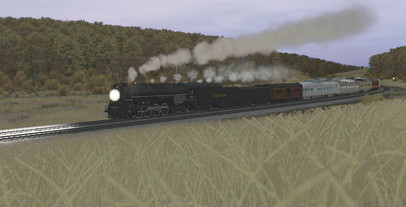HOME | DD
 ardcernius — The Spire - Earth's only space elevator
ardcernius — The Spire - Earth's only space elevator

#blender #earth #future #india #infrastructure #scifi #space #spaceelevator #blender3d #planet #render #sciencefiction #scificoncept #futurehistory #blenderrender #hardscifi #blendercycles
Published: 2023-08-24 23:09:13 +0000 UTC; Views: 1093; Favourites: 10; Downloads: 0
Redirect to original
Description
There was a time before orbital rings and their hundreds of tendrils lifting material from Earth, a time before posthumans described the nozzle setups that made in-atmosphere fusion drives possible. In those times, the biggest obstacle to Human expansion had been none other than the insane cost of moving material to LEO and beyond (and to a lesser extent, from).
By the 2090s, there had been more than one attempt of building infrastructure that made traversing to LEO cheaper. The laser-launchers of French Guiana and Cape Canaveral, the half-built Lofstrom loop of Kenya, and the space fountains of inner China all served the increasing demands.
But demand grew larger than capacity did. Launch costs started to oscillate anywhere between 100 to 2000 NAS dollars/kg, and they tended to higher limit. Getting stuff even higher, beyond geostationary orbit, proved even a bigger challenge and often cost four times that of LEO.
The TransNat federal government had long ago planned the building its own launch infrastructure, first of which had been the laser-launchers of French Guiana, and a Lofstrom loop near the Maldives. But the main project of a space elevator, costing a whopping 4 trillion NAS dollars, had to wait due to the Saudi-Iranian proxy war going hot in '83.
With the building beginning in 2086 (the counterweight had already been designated, a shipyard towed from LEO), the space elevator tether of length 74,300 km, made from a combination of carbon nanotubes and early variants of FR graphene, had been completed in 2094. Anchored south of India, powered by a custom-built fusion powerplant, it could move material at a cost of 25 dollars/kg, which was cheaper than all Lofstrom loops of that era.
The Spire, as the media of South India called it, moved processed and mostly pre-fabbed material to LEO (but NOT humans, see later) and mined material downward (to a mass ratio of roughly 1:1). Most of its lifting capacity was taken up by TransNat government projects (a MIPCS alone had a mass of nearly half a million tonnes), and only about 25% of total capacity was available to the private sector.
Sabotage Defense
The Spire was by all means the most heavily guarded object in human history (up to that point). The simple reason for this was a) its insane cost and b) the effects its collapse would have on the Equator-near nations.
The anchor point was guarded by a surface fleet of about 60 vessels, 2 of which were fixed-wing UAV carriers and 3 amphibious assault ships. A no-fly and no-sail zone of 700 kms in radius was enforced around the anchor point with an estimated 250 fixed-wing UAVs, 520 SAM batteries, 30 phased-array laser batteries and 110 ICBM interceptors. An inner security zone of about 150 km was further enforced, with 3 checkpoints looking through material.
In LEO, at least 2 area-defense ships were tailing the tether at all times, enforcing a no-burn zone. An unspecified number (likely 3) of nuclear, pulsed laser satellites were always in range of a firing solution to shot down ballistic or other projectiles. Upper regions of the tether were dotted with OPA based laser batteries, serving as debris control and area-defense.
In event of tether failure in the upper quadrants, the base would be near instantly (likely under 30 seconds) blown, releasing the tether into a higher orbit.
Bio Safety
Due to the elevator going through the radiation belt quite slowly, no human passengers were permitted (under normal circumstances). However, some MIPCS crews had specialised tether-carts, with about 40 mms of aluminium shielding, which allowed safe transit.
___________________________
Further information: Annual lifting capacity of about 8-24 million tonnes.
Note: on an actual photo, you could not see the space elevator, its too thin. This in an in-verse concept art/propaganda.
























